A tour of Arhuaca
In this exclusive photo essay, Externado Business Administration student Johana Montero (who is called Atigunney in her native Arhuaca culture) shows us around some parts of her part of Colombia that you might not be aware of. Johana took the photos and wrote the texts in English and Iku.
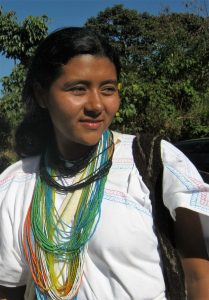
1. My name is Atigunney. I’m an indigenous Arhuaca from the Sierra Nevada de Santa Marta in the north of Colombia. I would like to share some photographs of my culture with you. I took these photos. I finished Level 1 English in 2016/02.
Nun Atigunney zakinu´kwa ni. Iku Sierra Nevada, Santa Marta zanu narwin. Iwa na´ba ema fotuyina miwise´chwa ukumanánun na´zuni.
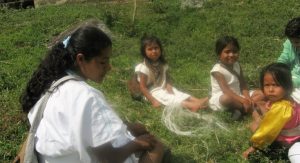
2. This is me teaching young girls how to make thread from the maguey plant. The fibre from maguey is called fique.
Emari gumusinu a´mia bechu yow unbunkumana agi´si. Bechu síari fique za´kinuga ni.
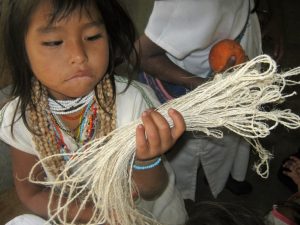
3. This is a small girl showing some finished fique.
Emari gumusinu a´mia bechu yow unbunkumana agi´si.
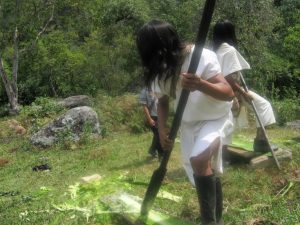
4. A young man extracting fique from the maguey plant with a sónukunu, which is a special stick.
Kwíma´ bechu a´sun nusi sónukunusin.
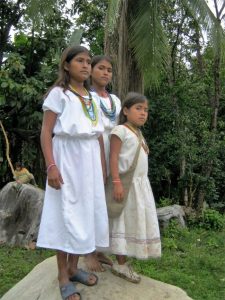
5. Three sisters near the village of Gunnmaku. This town is far from my house.
Máikunu a´mia winúnkuya Gunmaku powru mu´chey winni. Ema powru nukeinaku pari peyku zuna ni.
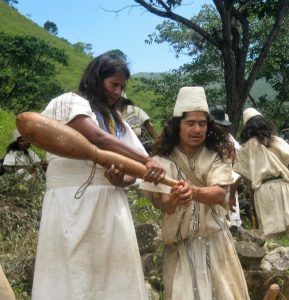
6. A woman washing a man’s hands during a special burial ritual. In this ceremony, the men wash the women’s hands, and the women wash the men’s hands.
In´gwi a´mia cheyrwa guna´ ichúkwun nu´ga ni, yow nikamu kuchonuyeku. Cheyrwa neykari a´mia guna´ íchu´kwuya ni iwa a´miari cheyrwa guna´ íchusi.
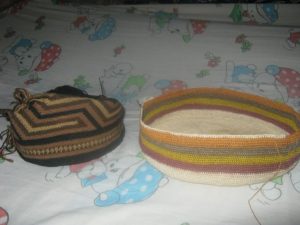
7. Two unfinished traditional mochilas. They are made from different materials and the colours of the mochila on the right are natural colours from plants.
Mowga tutu kuchonu´gwi neyka ni. Eymajinari sí diwún neykasin íkumunnu´ga ni awiri diwún kawi siku´kumanasin, kúnkia junasin.
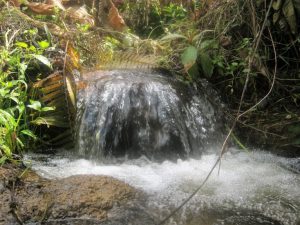
8. This is a natural spring near my house. It´s very important to take care of the natural water sources. Water is the source of life – it’s pure, cold and clean. This source comes from the high Sierra.
Ema je ipésuyun zuni, nukeynun pari muchey. Je dú chwamu kawa ni. Jeri ánugwe niwe´suya ni, bunsi, kú kawa ni.
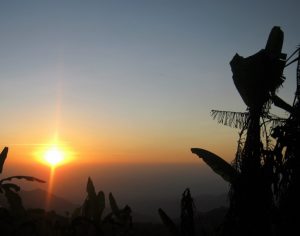
9. Sunset close to a small village called Muñímuke in the Sierra. I took this photo on a journey with my brother on the way to Kankawarwa.
Pworu Muñimuke jwi kumu´chunpari zunin. Nu´kawusin Kunkawarwa zwein nusi a´chunnhanarwa ni.
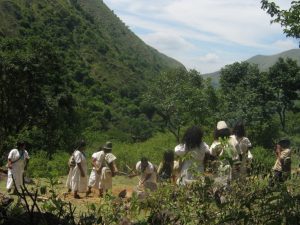
10. A group of indigenous getting ready for burial ritual. The family members are putting earth on the grave. This is in the village of Arwamake.
Powruba´Arwámake sinamu wichana nari ka´unkumunnusi eyzunin.
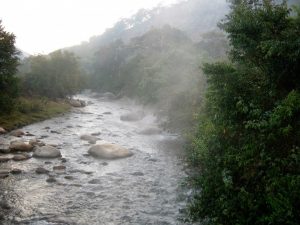
11. This is the river Nabusimake in the early morning light. My house is south of this place. Behind the mist, you can see some banana plants.
Ema je Nabusimake kuzagichuya ni, awiri murogwi zunin. Nukeynakuri eymajezoyai pari wa´rigun kwawani. Ku´tukunarigun wa´kundi puruntanu azari´na´ cho´chó zunin.
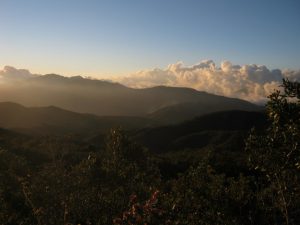
12. The mountains of the Sierra with clouds in the late afternoon. We can see different plants.
Kinku zanisi jirikaku chuzari awiri kun pinna juna nusi zunin.
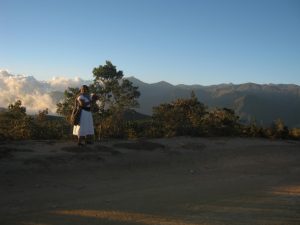
13. She is my aunt traveling on the road to Nabusimake. The altitude here is 3000 m above sea level.
Eymari nu´gwati ni Nabusimake zweyn nu´ga. Eymiri 3000 metru nánukin warin zunába´ ni.
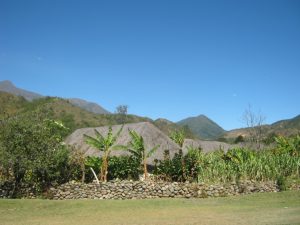
14. Nabusímake is the capital of Arhuaco Indigenous Reserve. This houses are in the town. In the photo we can see crops such as plantain, sugar cane, cabbage and a delicious fruit called chirimoya. Look closely and you can see the moon in the middle of the day!
Nabusimakeri pworu íkuzey umún a´zuna neyka ni. Emiri powruba´ zunin. Zamu juna chwu´kwey zunin, puruntanu, ku´ñu, kori awiri chirimoya a´nugin. Na´ba, tima eysá gwi, jwidé zuna´ba!
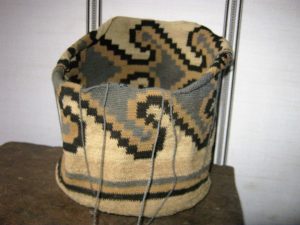
15. I like weaving. I made this mochila. My mother drew the design. In general, it takes two months to make a mochila. Behind the mochila there is a typical white costume worn by the men.
Tutu ísukwa nu´guzuna ni. Ema tutu isa ukwin. Nazakuse´ akin imu ísuya ni. Awiri mowga timari zanika kinki uwani i´gwi tutu mekuchona áwukindi. Ema tutuzun úkunayri cheyrwa mu´ka akúnkunase´ a´benugin.
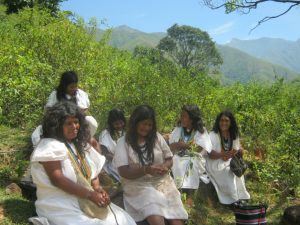
16. A group of women weaving, talking and laughing. It´s a nice sunny day.
A´mia jina tutu isun, re´rimasayun awiri win semun nugin.
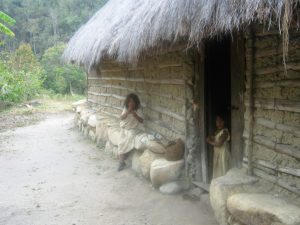
17. This is a typical house made of adobe and wood. It has a thatched roof. All typical houses have big stones all around them. There are two young girls. They are waiting for their parents.
Ema urákuri ka´ a´nisi bunna ni, na´ba a´nu i´minusi. Uchasin bunna. Awiri gumusinu mowga apaw winunkiwa´kun nu´ga.
